Lots to Like in BMW iX1, But It's Not Coming Here
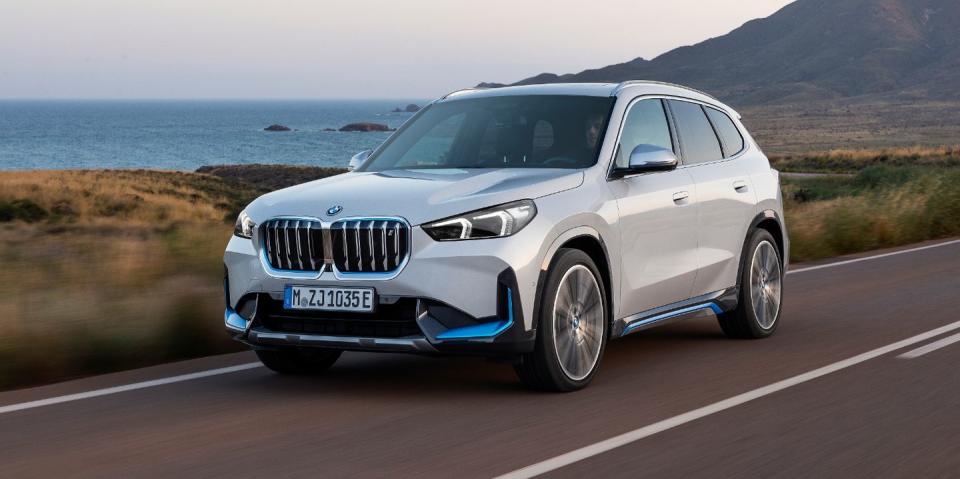
Test driven in Europe, BMW's iX1 is a good EV that is faster and more fun to drive than its gasoline-powered sisters—at least one of which will be coming to America.
BMW claims a 5.7-second 0-62 mph time for the iX1 xDrive 30, making it faster than the gasoline-fueled X1 xDrive 28i which will reach the US.
The 64.7-kWh battery supports DC fast charging, with a 130-kW peak able to take it from 10% to 80% in as little as 29 minutes.
Remember when BMW was at the sharp end of electrification? It really isn’t that long since the German brand was leading the way, especially with the i3 baby hatchback and its innovative carbon-fiber structure. But the i3 has been dropped in the US, and BMW’s more recent electric offerings are mostly based on existing models, while the first EV-only Neue Klasse vehicle will arrive in 2025.
The new iX1 which we’ve driven in Europe is the latest of these, an EV version of the recently launched third-generation X1 compact crossover. But sadly there seem to be no active plans to bring it to the US.
This is regrettable given that Autoweek’s first experience with the iX1 on its native side of the Atlantic suggests it is both a good EV and also faster and more fun to drive than its gasoline-powered sisters—at least one of which will be coming to America. It feels like we’re losing out, especially when the all-electric versions of the X3, 4-Series Gran Coupe, and 7-Series are all US-bound.
Although BMW says the iX1 will eventually become a full model line in its own right, one that will include two-wheel-drive versions, it is being launched with the exclusive option of a twin-motor AWD powertrain.
Branded the iX1 xDrive 30, this uses a motor on each axle with the only significant mechanical difference between the hardware at both ends being a lower gear ratio for the single-speed reduction drive at the back. Peak power is 308 hp, which is less than cars like the Polestar 2 and Volvo C40 Recharge, and the Euro-market Brabus Smart #1.
Despite that shortfall, performance feels more than potent enough, especially given the lack of any delay or distraction from a transmission needing to change gear. The iX1 has a keen accelerator map which makes it hard to achieve a smooth start, but once rolling it gathers speed quickly and without apparent effort.
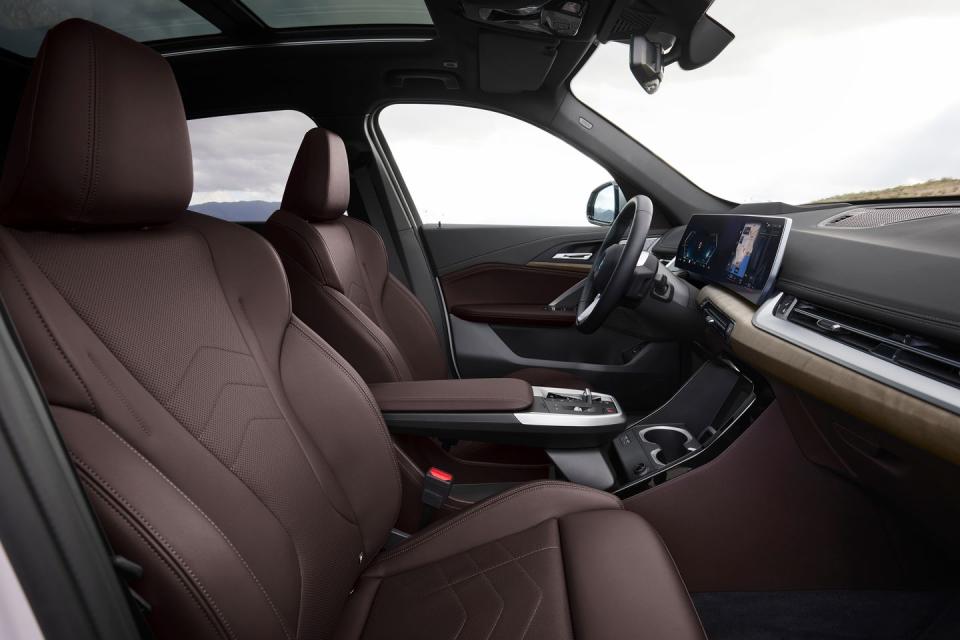
BMW claims a 5.7-second 0-62 mph time, making it faster than the X1 xDrive 28i which will reach the US. Experiencing the full output requires use of a paddle marked Boost behind the steering wheel, which allows the peak to be delivered for 10 seconds and is one of a number of gimmicky features on the car. In real world use, the difference between engaging Boost and simply flooring the throttle was barely discernible.
While the iX1’s all-wheel-drive system had no difficulty finding traction, even in damp conditions, the driving experience was short on the sort of dynamic connection that buyers used to choose BMWs for.
The steering is light and almost completely lacking in any meaningful amount of feel, and although the wheel delivers accurate responses the iX1’s handling balance feels very front-biased, especially on slippery roads. Even a modest excess of speed saw the nose edging wide, and added power just created more understeer.
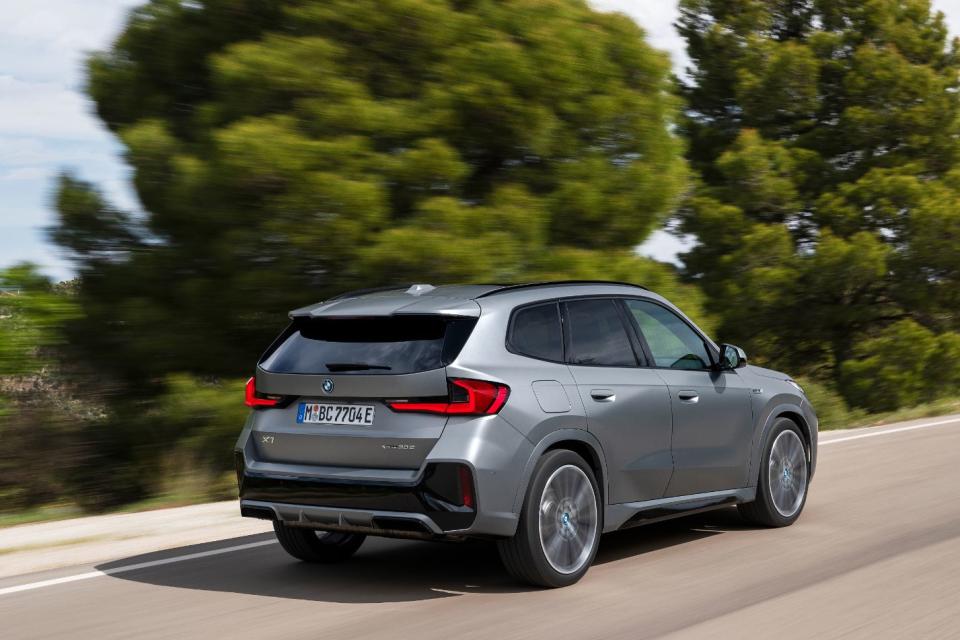
On the plus side, refinement is impressive even at highway cruising speeds, especially once the switchable “Iconic Sounds” digital noise generator was turned off. This is less incongruous than some rival soundscapes, but still adds nothing to the driving experience.
Despite lacking passive dampers—and weighing 4400 pounds on BMW’s numbers—the iX1 rides well even over bumpy surfaces. Braking combines regeneration and friction seamlessly, and the iX1 has a single pedal mode which is activated by pulling the gear selector back into the “B” position—this works well at urban speeds.
The iX1’s hefty mass is attributed to the substantial 64.7-kWh battery pack sitting beneath its floor, giving a range of up to 266 miles under Europe’s WLTP standard. While the Euro-standard is generally optimistic, the iX1’s rating would likely still translate to around 240 miles under the more demanding EPA range standard.
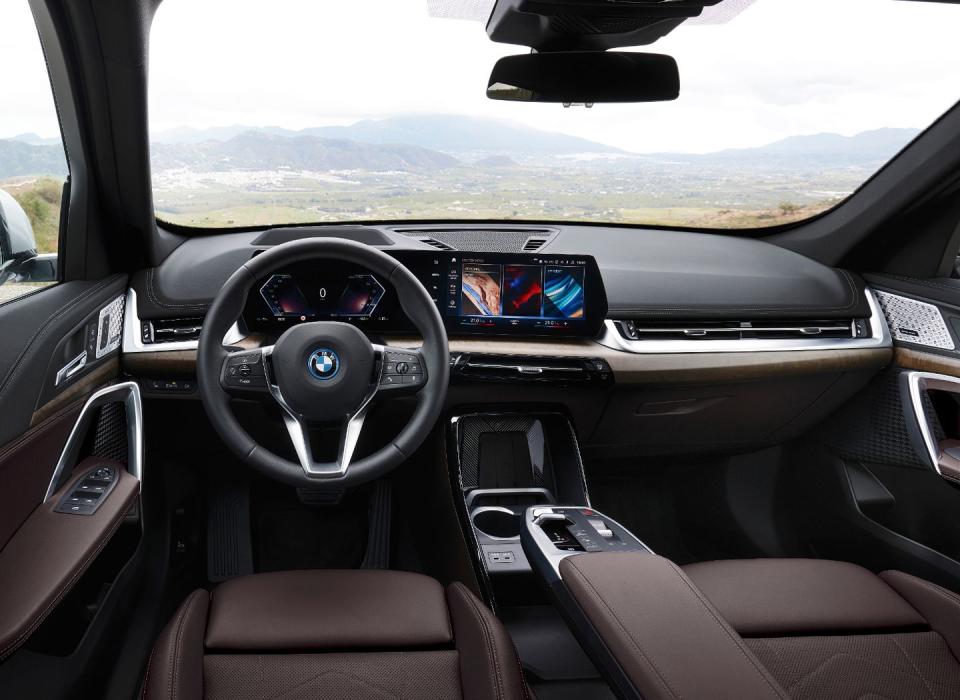
The battery supports DC fast charging, with a 130-kW peak able to take it from 10% to 80% in as little as 29 minutes. The pack will also automatically adjust its temperature to the optimal 77 degrees required for peak charging when a fast charger is selected as the destination in the navigation system.
The iX1’s interior feels like a significant improvement over the cabin of the outgoing X1, with American buyers set to experience it with the gasoline X1 xDrive28i. It feels spacious given the car’s compact external dimensions. The overall length of 177 inches makes it five inches shorter than a Toyota RAV4.
Despite that, there is plentiful room for adults both front and rear, a decent 17.3-cu-ft trunk, and several nice design touches. While most physical switchgear has been culled, BMW has kept a raised center console for the gear selector, volume, and track skip controls and a “My Mode” selector.
While I would have preferred to keep conventional temperature controls—and the useful row of programmable shortcut buttons that have now gone—the eighth-generation BMW operating system works well and the iX1’s curved 10.7-inch central touchscreen looks good, integrating directly with a 10.4-inch digital instrument display.
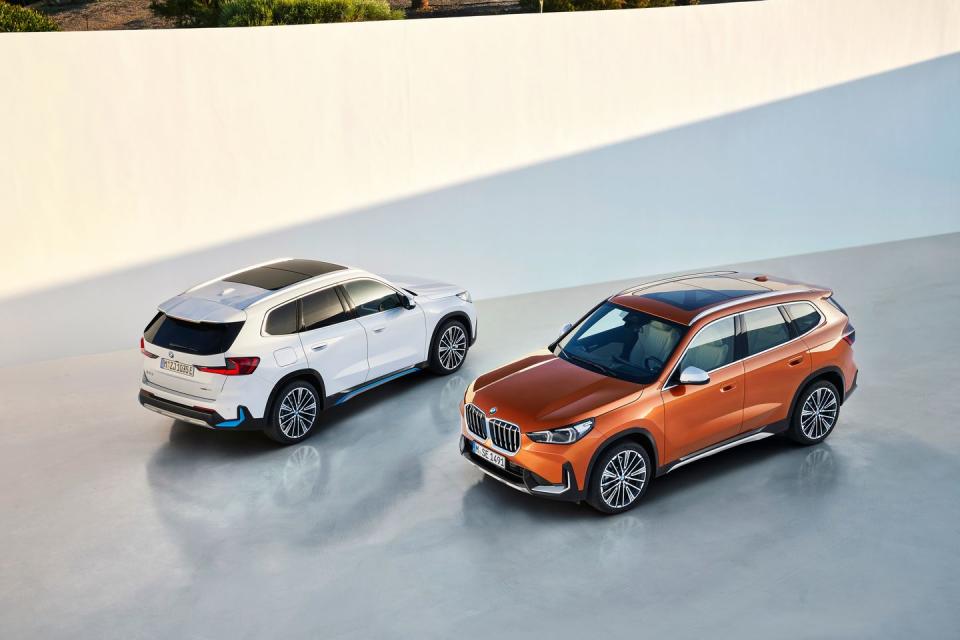
But while the technical substance feels solid, there is also a contrived amount of style with the arrival of three new modes beyond the regular Personal, Sport and Eco. Swiping right of the traditional trio on the touchscreen brings up another selection: Expressive, Relax, and Digital Art.
The first of these changes the dashboard graphics and turns on the driver’s seat massage, and the second starts to play an ambient soundtrack, while the third allows a configurable redesign for the central screen. Clearly BMW reckons this fluffy stuff matters more than driving behavior to some potential customers.
The chance to drive the iX1 back-to-back with a Euro-spec X1 xDrive23i gasoline model proves the electric version is unsurprisingly quieter, but also keener. Despite weighing some 600 pounds more than its four-cylinder sister, the iX1 feels just as willing to change direction.
So it’s a shame the US will miss out on this baby EV, although BMW’s decision was doubtless based in large part on the fact its European production would deny it the EV tax credit. In Germany, the iX1’s €46,300 ($46,353) pre-tax base price is almost identical to the entry-level Kia EV6 AWD—competitive given the premium badge.
It seems the same politics that denied us many of Europe’s more interesting combustion cars— and occasionally prevented them from experiencing some of ours—is going to continue into the electric era. Can’t we all just get along?
Do you think it makes sense for BMW to export the iX1 EV to the US, with the larger iX already on sale here? Please comment below.

 Yahoo Autos
Yahoo Autos 